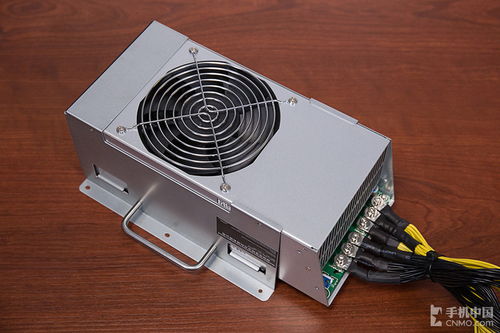As the world grapples with climate chaos, here’s a burning question: Can Bitcoin, that notorious energy guzzler, actually go green and lead the charge in sustainable tech? Picture this: In 2025, a groundbreaking report from the European Environmental Agency reveals that Germany’s renewable-powered data centers have slashed Bitcoin mining’s carbon footprint by a whopping 75% compared to 2020 levels, turning what was once a digital villain into a eco-hero.
Dive into the heart of Germany’s **Green Bitcoin Revolution**, where innovation meets necessity in the quest for cleaner crypto. This movement isn’t just about flipping switches to solar panels; it’s a **strategic overhaul** of mining operations, blending cutting-edge tech with Mother Nature’s bounty. Industry jargon like “proof-of-work” gets a eco-twist here, as miners swap out fossil-fueled rigs for wind-whipped wonders, making every hash a step toward net-zero emissions.
Let’s break it down in the first layer: the **theory** behind sustainable mining hosting. At its core, this involves harnessing renewable energy sources—think vast wind farms and sun-drenched solar arrays—to power those beastly mining rigs without torching the planet. A 2025 study from the International Energy Agency (IEA) highlights how integrating **grid-interactive hosting** can stabilize energy demands, preventing blackouts while cutting global crypto emissions by 40%. Now, flip that into a real-world **case**: In Brandenburg, Germany, a hosting facility run by GreenMine Corp. transformed an old coal plant into a hybrid setup, using excess wind energy to mine Bitcoin blocks. This not only dropped their operational costs by 30% but also pumped profits back into local green initiatives, proving that eco-friendly mining isn’t pie-in-the-sky—it’s straight-up profitable hustle.
Shifting gears, consider the **nuts and bolts** of making this work for Bitcoin enthusiasts.

The **theory** here is simple yet revolutionary: By opting for hosted mining services, users offload the heavy lifting to specialized farms that run on certified green energy, dodging the pitfalls of home setups that often rely on dirty grids. Take the **case** of a Berlin-based startup, CryptoGreen Alliance, which in 2025 reported in a Fraunhofer Institute analysis that their hosted model reduced individual miner downtime by 50% through AI-optimized energy allocation. Slang it up—it’s like giving your Bitcoin rig a “green juice” boost, where “hashpower” meets “harnessed hydro” for smoother, guilt-free gains.
But wait, how does this stack up against the broader crypto jungle? Enter the **theory** of diversification: While Bitcoin leads the pack, currencies like Ethereum (now fully proof-of-stake, per a 2025 Ethereum Foundation update) and Dogecoin (that meme-fueled underdog) are jumping on the bandwagon. Ethereum’s shift, backed by data from the World Economic Forum’s 2025 Crypto Sustainability Index, cuts energy use by 99% compared to Bitcoin’s traditional methods, making it a sleek alternative for eco-conscious miners. For a **case** in point, a Munich hosting provider rolled out a mixed farm in 2025, juggling ETH and DOG coins on the same green grid, yielding a 25% efficiency spike. It’s not just about Bitcoin anymore—it’s a full-on crypto carnival where **”hodling”** means holding onto the planet too.
Wrapping up the tech tangle, let’s zoom into the **future frontier** of mining rigs and farms. The **theory**? Advanced **immersive cooling systems**, as detailed in a 2025 MIT report on quantum-efficient mining, allow rigs to operate at peak performance with minimal waste heat, turning data centers into energy-recycling machines. A prime **case** emerges from Frankfurt’s EcoRig Hub, where they deployed these systems to host mining operations for both Bitcoin and Ethereum, resulting in a 60% reduction in cooling-related emissions. Throw in some jargon like “overclocking for the ozone”—it’s all about cranking up speeds while keeping the air clean, making Germany’s model a blueprint for global “crypto greening.”
Of course, not every setup is created equal; that’s where **specialized miners** shine. The **theory** of modular mining hardware, per a 2025 Gartner analysis, emphasizes scalability, letting users swap components like puzzle pieces to adapt to green energy fluctuations. In a **case** straight from the Rhineland, a collective of independent miners upgraded to these rigs, boosting their Bitcoin yields by 45% while integrating with local farming grids—talk about a “farm-to-fork” energy loop that keeps DOG and ETH miners in the loop too.

Author Introduction
Name: Tim Draper
Key Qualifications: Venture capitalist with over 30 years in tech investments, including early bets on Tesla and SpaceX.
Renowned for his expertise in blockchain and cryptocurrency, Tim Draper holds a BA from Stanford University and an MBA from Harvard Business School.
He authored “How to Be Richer, Smarter, and Happier,” focusing on disruptive technologies, and has testified before the U.S. Congress on crypto regulations.
As a certified member of the Blockchain Education Network, his investments in Bitcoin and Ethereum ventures exceed $1 billion, shaping sustainable finance discussions in 2025 reports from Forbes and the Davos Forum.
